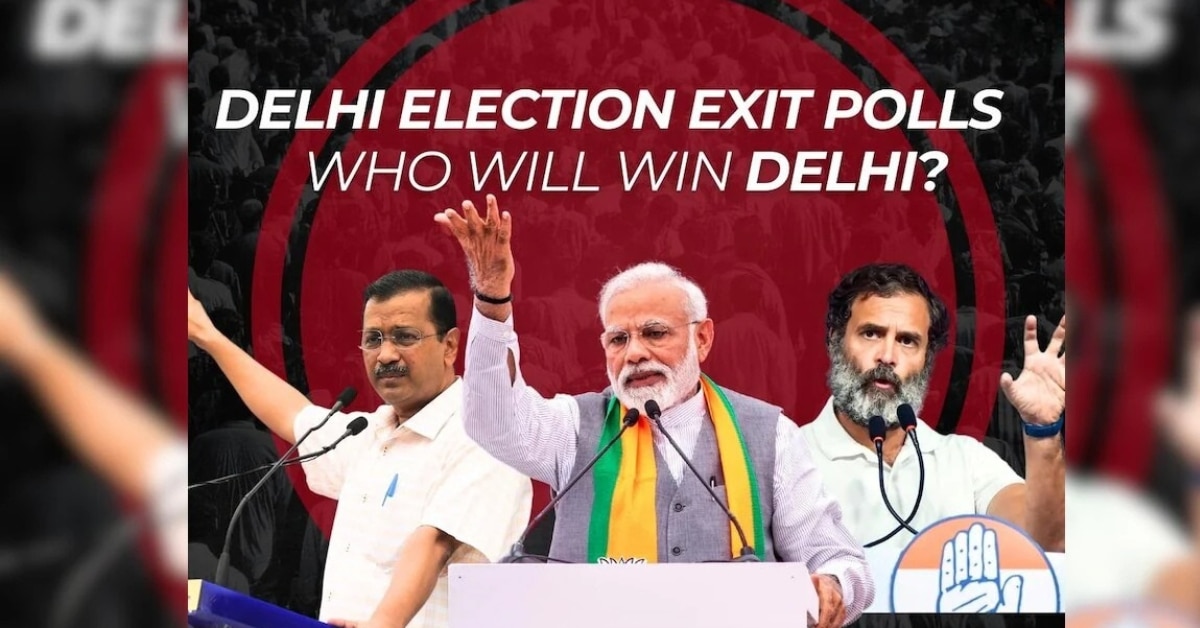Delhi Election 2025: A Battle for the Capital’s Future

As the sun sets over the bustling streets of Delhi, the city stands on the cusp of a new political dawn with the conclusion of the Delhi Assembly Election 2025. With 70 seats at stake, the capital has witnessed a fierce battle between the incumbent Aam Aadmi Party (AAP), the Bharatiya Janata Party (BJP), and the Congress, each with its vision for Delhi’s future. Here’s an in-depth look at what the results might signify for the city’s residents and why BJP appears to have the upper hand this time.
Voter Turnout and Initial Trends
The election saw a voter turnout of approximately 57.89%, with Northeast Delhi recording the highest at 63.83% and South East Delhi the lowest at 53.77%. This turnout reflects the engagement of Delhiites in shaping their governance. Early trends from the Election Commission of India showed BJP leading in 37 seats and AAP in 20, suggesting a potential shift in the political landscape of the capital.
AAP’s Campaign: Promise of Continuity and Progress
AAP, led by Arvind Kejriwal, has been campaigning on the promise of uninterrupted progress, emphasizing their achievements over two successive terms. Kejriwal, in one of his final speeches before the election, boasted, “We will win at least 55 of the 70 seats this time.” His party’s focus has been on free utilities, education reforms, and health services through the mohalla clinics. However, the campaign wasn’t without its controversies, especially with Kejriwal’s “Sheesh Mahal” allegations, where he accused BJP of trying to poach AAP MLAs with offers of ministerial posts and money, a claim BJP vehemently denied.
AAP’s candidates like Atishi from Kalkaji and Saurabh Bharadwaj from Greater Kailash have been vocal about continuing their developmental agenda. Atishi, in a rally, stated, “Delhi has seen what happens when you have a government that works for the people. We will continue this legacy.” However, early trends indicate a tough fight for these prominent figures, with reports suggesting they might be trailing in their constituencies.
BJP’s Strategy: Change and National Integration
BJP, on the other hand, has campaigned on the narrative of change and better integration with national development schemes. Manoj Tiwari, a BJP candidate, confidently remarked, “The exit polls are in favor of BJP. Along with this, as a political worker, when we go to the field, we can sense that BJP’s chief minister will be elected in Delhi.” The party’s campaign highlighted issues like corruption under the AAP government, promising cleaner governance and development similar to what has been seen in other BJP-ruled states.
BJP’s strategy included leveraging the popularity of national leaders like Narendra Modi, with claims that his presence would ensure Delhi’s development aligns with national goals. This approach seems to have resonated with a significant portion of voters, as BJP appears to be leading in numbers beyond expectations from recent exit polls.
Why BJP is Favored to Win
Several factors tilt the scales in BJP’s favor:
Exit Poll Predictions: A majority of exit polls have predicted a BJP win, with projections suggesting BJP could secure between 35 to 50 seats, significantly above the majority mark of 36 seats needed to form the government.
Voter Sentiment and National Wave: BJP’s national standing, bolstered by Narendra Modi’s leadership, has translated into local support. The “double-engine” government narrative has appealed to voters, especially those looking for alignment with national development agendas.
Anti-Incumbency and Corruption Allegations: There’s noticeable anti-incumbency against AAP, fueled by corruption allegations against its top leaders, potentially swaying voters towards BJP.
Strategic Campaigning: BJP’s aggressive campaign, focusing on local issues combined with national leadership appeal, has been effective.
Vote Share Trends: Recent social media posts and previous election data indicate an increase in BJP’s vote share in Delhi, possibly rising to 43-45% or more.
Congress’s Weak Position: Congress’s inability to make a significant impact might mean less of a vote split, indirectly benefiting BJP.
Congress: A Struggle for Relevance
Congress, despite its historical stronghold, has been struggling to reclaim its position. With leaders like Sandeep Dikshit from New Delhi, the party aimed to remind voters of past governance under Sheila Dikshit, focusing on infrastructure and public services. However, early counts suggest that Congress might not make significant inroads, with projections giving them one to two seats, if any.
What the Results Mean for Delhi
If BJP manages to form the government, it would mark a significant political shift, ending AAP’s two-term reign. This could mean a change in policy direction, particularly in how local governance integrates with central schemes, possibly affecting areas like education, health, and urban development.
For AAP, this election result could be a wake-up call, pushing them towards introspection on governance style and public engagement strategies. The party’s narrative of local vs. central governance clashes might need reevaluation if they aim to regain momentum.
The impact on Congress could either push the party towards further obscurity in Delhi politics or spur a reformation in strategy, focusing on grassroots connection rather than relying solely on historical legacy.
Looking Forward
As Delhi waits for the official declaration of results, the city braces for changes. Whether it’s BJP’s promise of a new era or AAP’s continuity with a new approach, Delhi’s political future hangs in balance. The results will not only shape the immediate governance of Delhi but also set the tone for political campaigns in the upcoming national elections.
The discourse around these elections has been intense, with both parties having made bold claims. AAP’s Arvind Kejriwal suggested that his party’s performance has always exceeded exit poll predictions, while BJP’s leaders like Kamaljeet Sehrawat have expressed confidence in BJP’s ability to address Delhi’s disillusionment with AAP’s governance.
In the end, the voters of Delhi have spoken, and now, as the counting continues, every Delhite watches closely, understanding that the outcome will dictate the city’s path for the next five years. Whether this election brings the change BJP advocates or the continuation of AAP’s policies, one thing remains clear: Delhi’s political landscape is as dynamic as ever, reflecting the aspirations and frustrations of its citizens.

